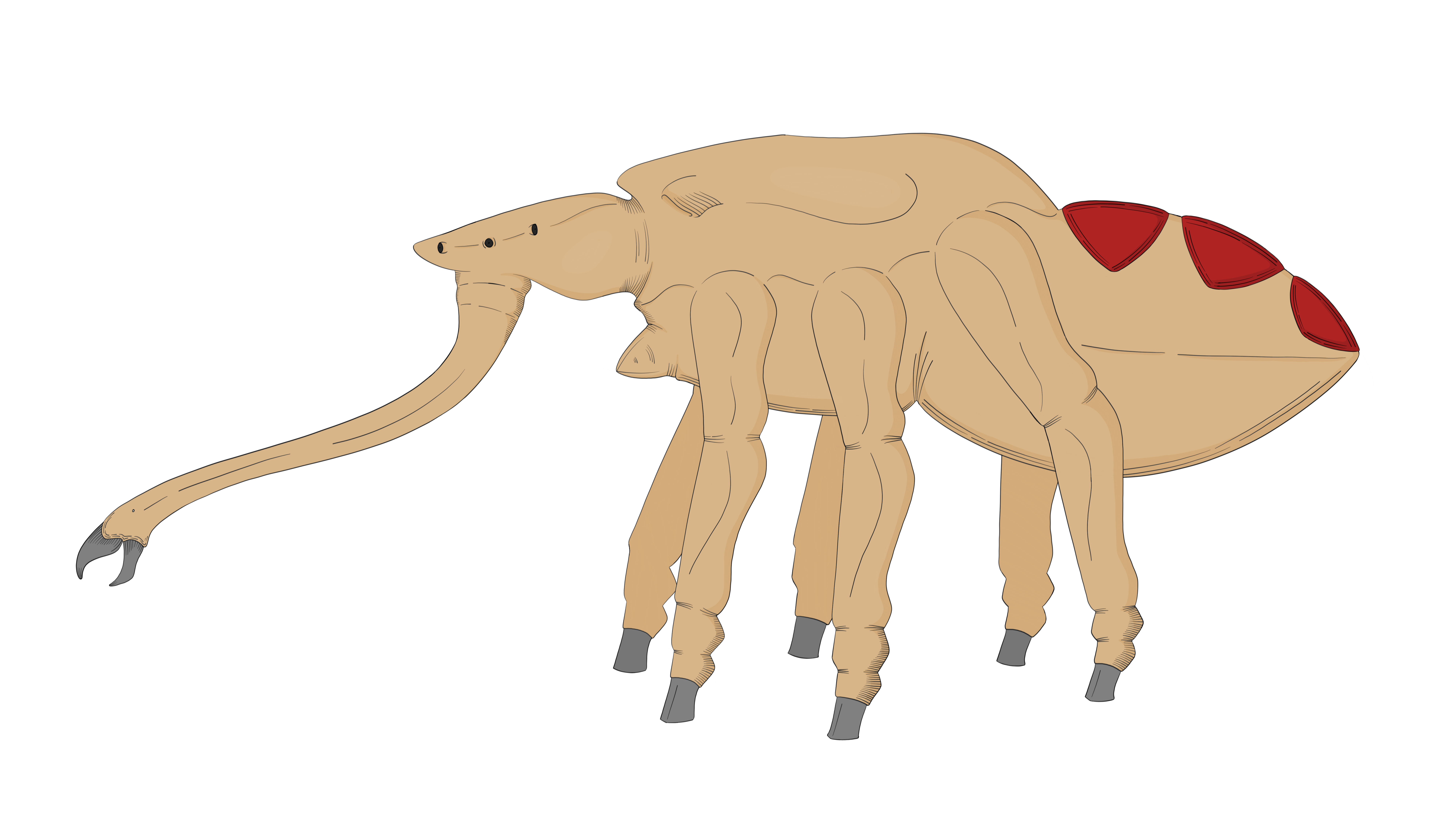HOME | DD
 YellowPanda2001 — Brontobula maculata
YellowPanda2001 — Brontobula maculata

#aliencreature #alienspecies #xenobiology #speculativeevolution #speculativebiology
Published: 2023-05-23 10:31:15 +0000 UTC; Views: 5409; Favourites: 57; Downloads: 3
Redirect to original
Description
In the planet of Radis, a world much like Earth, creatures have evolved in some of the most extraordinary ways. In this alien planet, some forms are vaguely recognizable as Earth-like, but with several key features distinguishing them.The Brontobula maculata is one of the largest animal-like lifeforms from this planet, and in many ways resembles a sauropod, both in terms of size and lifestyle. But anatomical features, that marry this creature to the surrounding dominant lifeforms of the planet, allow it to stand out from Earth's fauna.
1. Biradial symmetry - A portion of the dominant land fauna of Radis is unique for being biradial. Unlike the bilaterally symmetric vertebrates, or the radial echinoderms of Earth, the biradials are divided by two planes of symmetry, making them both functionally bilateral and functionally radial. In essence, this turns creatures, like Brontobula into identical copies of each other within the same organism. They walk, like most vertebrates, in whatever direction their head is, and alternating from one head to another. Some Brontobula, and indeed some other biradials, may have more preference in using one head over the other for orientation and feeding. Some Brontobula may have disproportionate, instead of equally sized, head and necks on each side, and some other species of biradials have properly abandoned the biradial method in favour of a proper bilateral or radial format.
2. Mouth - Brontobula have two mouths. They are large herbivores, eating the flora that exists in Radis. They have three large sets of lower tooth plates, and a large serrated tough surface at the top, making them efficient to cut off plant material. They're not great at chewing, so they will eat large quantities of vegetation, which will then be fermented in their gut. Each mouth is located on one head that has its own independent "brain", which connects with the other brain through an intricate nervous system that spreads across the whole body.
3. Eyes - Just like the mouth, each head possesses eyes. Two compound eyes, to be precise.
4. Neck - Brontobula are browsers, feeding on the vegetation that is encountered in large tree-like flora, so their necks are used to reach to those tall canopies, but are also great for grazing and expand their foraging radius without moving too much.
5. Legs - Brontobula have eight legs. Four of them are located closer to the base of the neck and are held directly under the body, while the other four are more splayed and located further to the edge of the torso. They are columnar and articulated, to allow them to support their extraordinary weight.
6. Nostrils - The nostrils of Brontobula are located at the sides of the dorso. They have two of them, that inhale air from above.
7. Lung cavities - The lungs of Brontobula are very big. There is a set of four lungs on the large dorsal cavity, that spread air through an intricate array of air sacs that cover much of the body, including the bones, making it light-weight.
8. Anus - The digestive system of Brontobula, as it begins with two mouths, ends up converging as the two large esophagus meet a large fermentation chamber, a sort of "stomach ring" that circles much of the massive torso. The stomach is quite complex, as it has a large compartment for fermentation, and then the lower surface of the stomach is filled with an intricate network of tubes that absorb and guide much of the nutrients to an intricate array of blood vessels, working as in-built intestines. Then the stomach leads the waste to two tubes that converge into a singular anus located right at the center of the animal, dropping the faeces on the ground. The anus is also where the Brontobula complete their reproduction. Brontobula are hermaphrodites, and each individual inseminates the other one, each one kissing the anus of the other and swallowing the sperm-like cells. These cells end up travelling the digestive system and eventually make their way down to the anus where they then meet the reproducive cavity, inseminating the other gamete. These eventually generate a clutch of soft-shelled eggs. The large Brontobula lay down their eggs in a large cavity they dig up, with the freshly laid eggs being squishy enough to withstand impact, so they can fall at a large distance without breaking. One the eggs are laid, the Brontobula cover them up in sediment again, and leaves them to survive on their own.
9. Torso - The torso of Brontobula is very wide and circular. It is supported by a massive bony cage that provides structural support for a large sternal plate, that covers the "belly". A vertebral column runs the top of the creature, leading to one large neck on each side. The respiratory system sits on top, and the heart sits right below the lungs. Then there's the large stomach ring that surrounds other important organs, such as the liver and kidneys, and also some of the reproductive system.
Related content
Comments: 8

👍: 1 ⏩: 1

👍: 1 ⏩: 1

👍: 0 ⏩: 1

👍: 1 ⏩: 1

👍: 1 ⏩: 0

👍: 1 ⏩: 1

👍: 0 ⏩: 0

👍: 3 ⏩: 0

























